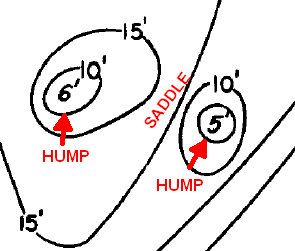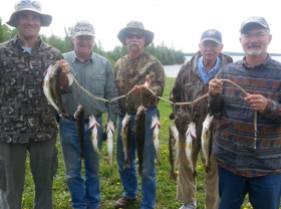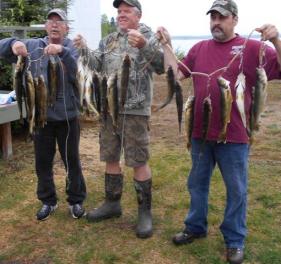The real secret to catching more fish is knowledge! The more you know, the more fish you’ll catch. Fish relate to lake structure like people relate to things around them. Here you’ll find out what kind of structure fish relate to so you know where to find them.

Look for tips identified by a slip bobber
Chance are pretty good that you live under a roof and have a kitchen. And, if you left your home to drive to a town a few miles away you’d probably take a road and not drive through a field to get there. (At least I hope so )
So what does all that have to do with fishing? Fish need food and shelter just like we do and lake structure provides both. Also, when fish travel they normally follow familiar structure between two points.
Knowing what structure fish like will help you find fish. And finding fish is half the battle!
Some of the most common lake structures are Points, Bars and Breaks.

As you can see in this picture a Point is where visible land extends into the lake. The land is surrounded by water on three sides.
A Bar is shallow water surrounded on three sides by deeper water. The most common type of Bar is an underwater extension of a Point. Another Bar may just be an extension of shallow water into deeper water with no visible above water Point.
The bigger the Point or Bar the better since they attract and hold more fish.
A Break is noticeable change in depth and is sometimes called a drop-off. In many lakes the primary Break line is where the depth changes from around 5-10 feet to 15-20 feet. In shallow, bowl shaped lakes a Break may only be a depth change of a few feet or even less. Breaks serve as travel routes for fish.
The steeper the Break, the better.
The top edge of a Break is called a Ledge. A lake usually has a few Breaks and Ledges that form the decent into deep water.
 Other common fish holding structure are Humps and Saddles.
Other common fish holding structure are Humps and Saddles.
A Hump is sometimes called an underwater island or even a mid-lake bar. This picture has two Humps.
A Saddle is deeper water that leads up to shallower water on two sides.
We can’t forget about Fingers, Inside Turns, and Outside Turns. Fingers are small extensions of a Bar or Hump into deeper water.
Inside Turns are where a Finger meets a Bar. Points and Bars have Inside and Outside Turns as well.
 The picture can probably do a better job of showing you what these are .
The picture can probably do a better job of showing you what these are .
Inside Turns are usually a better choice for finding fish.
Finally, we need to define Inside Weed Lines, Outside Weed Lines and mention Rock Piles. An Inside Weed Line is simply the shallow side of a weed line while the Outside Weed Line is the deep edge of a Weed Line. Outside Weed Lines provide travel routes for fish as well as a great place for fish to hide and ambush other fish.
Rock Piles are important to mention because they’re an excellent place to find fish.
Follow our HUNTING BLOG
WEB RATES FISH HUNT CABINS PHOTOS
TESTIMONIALS BROCHURE HUNT BOOKLET







